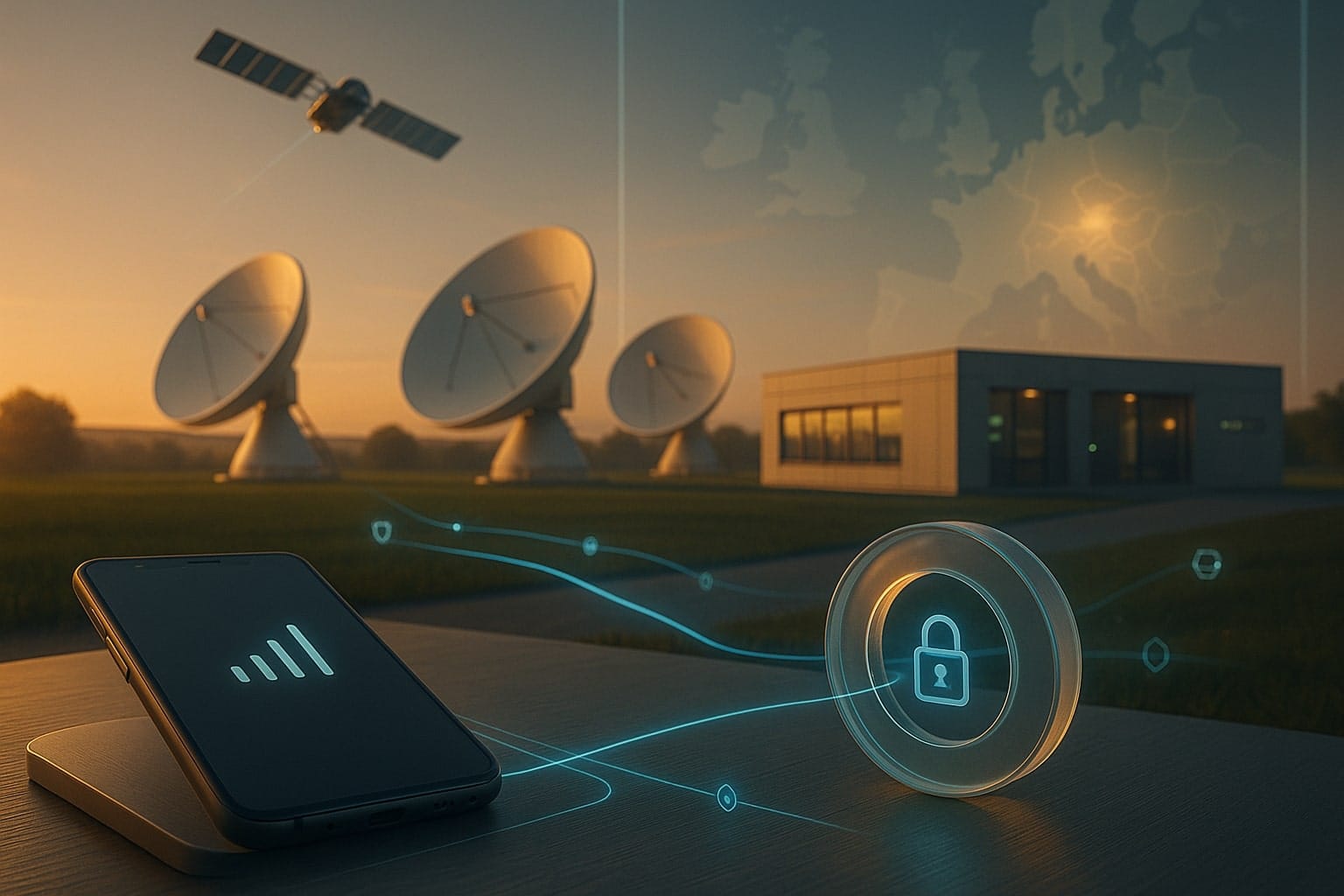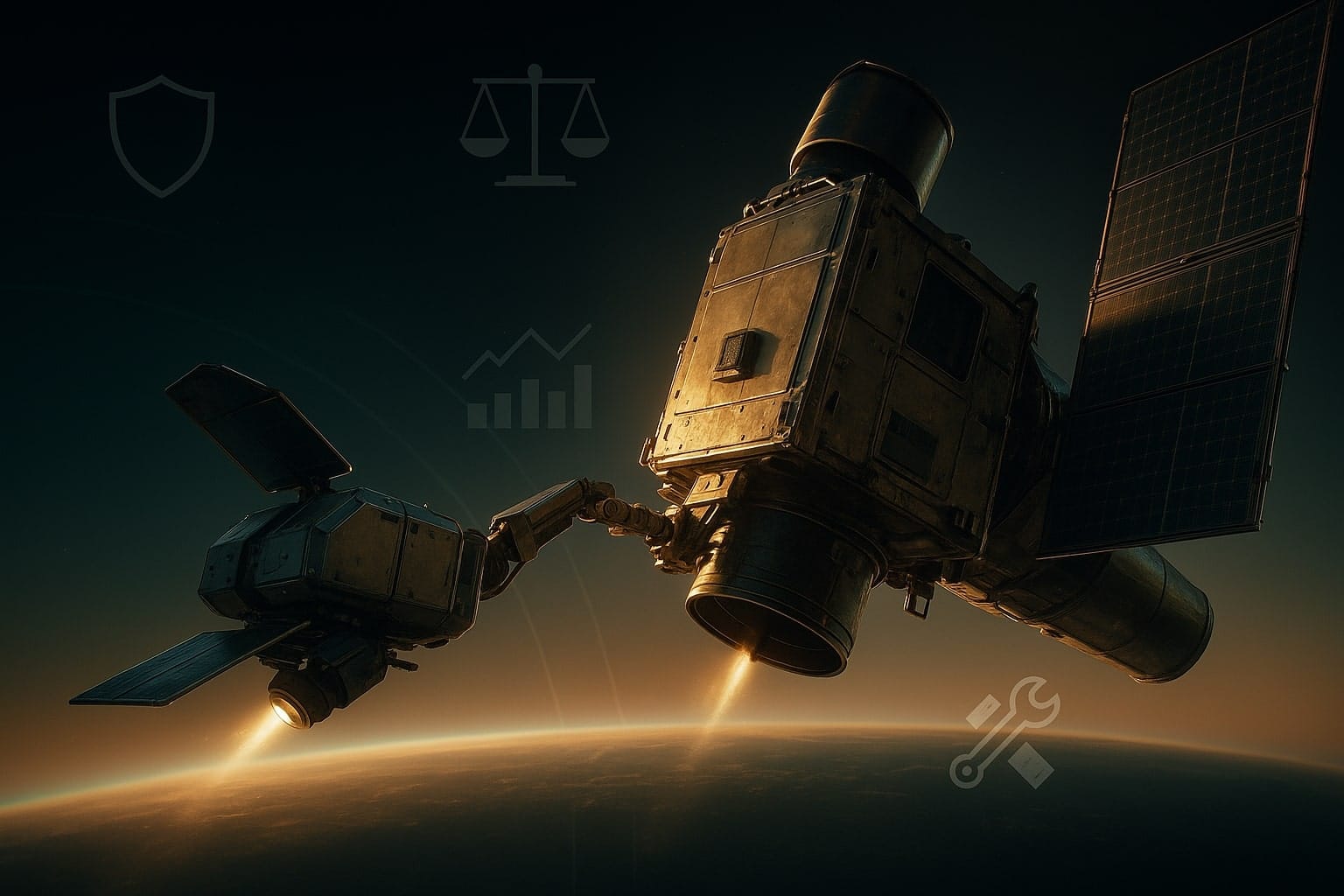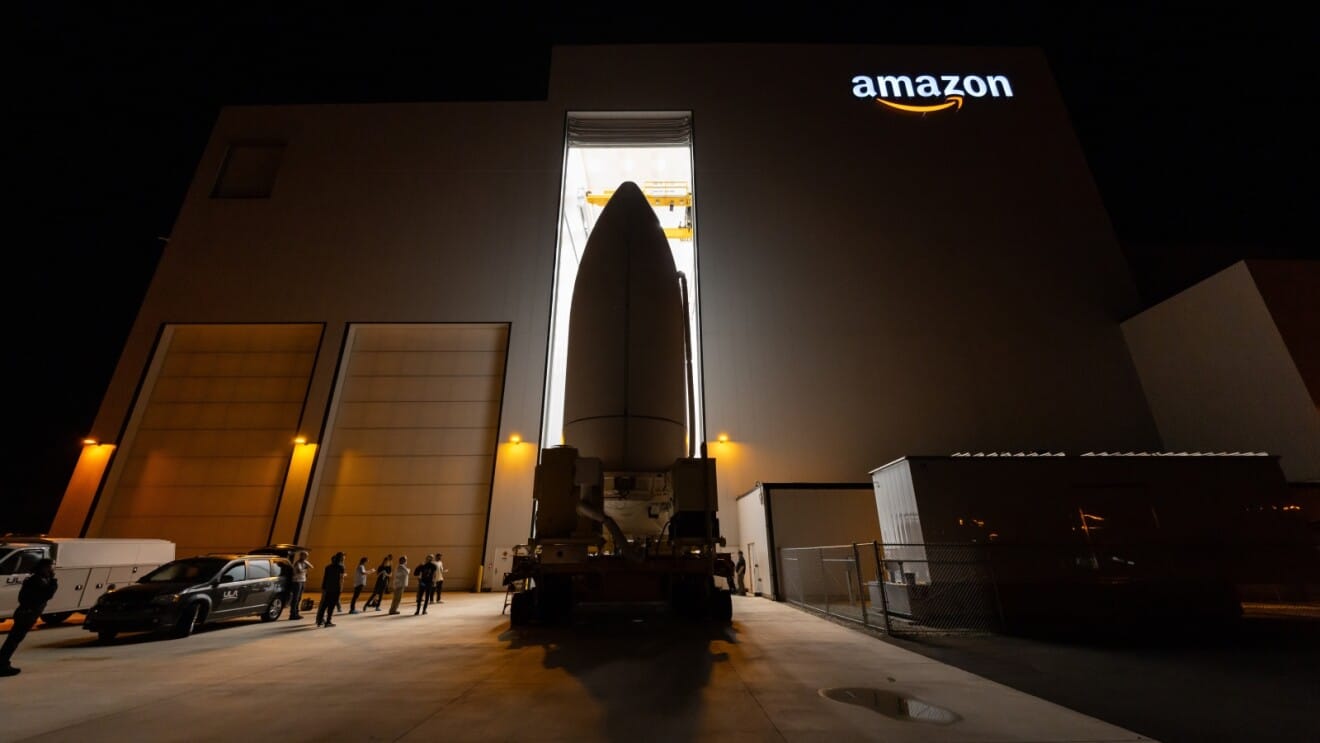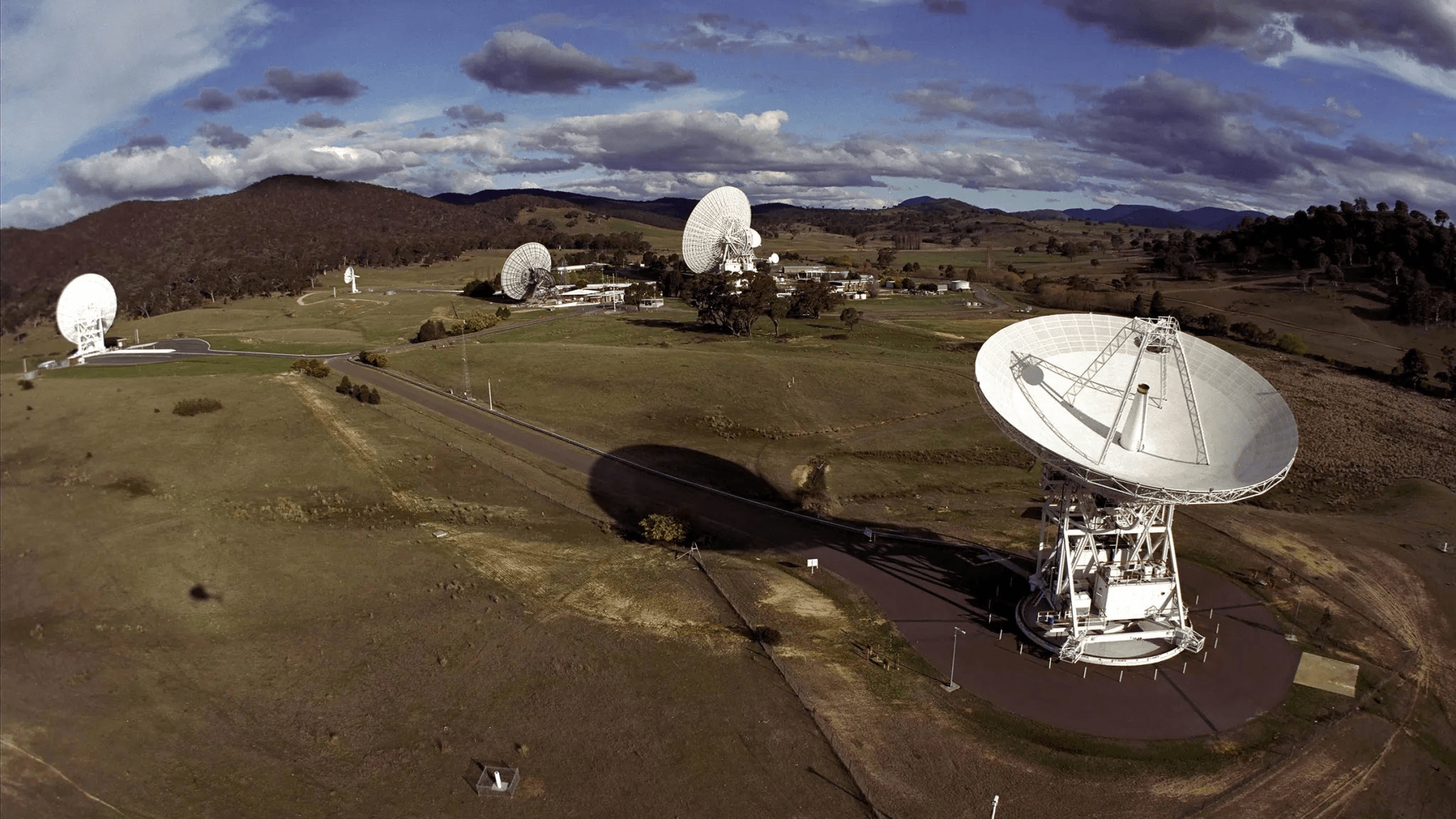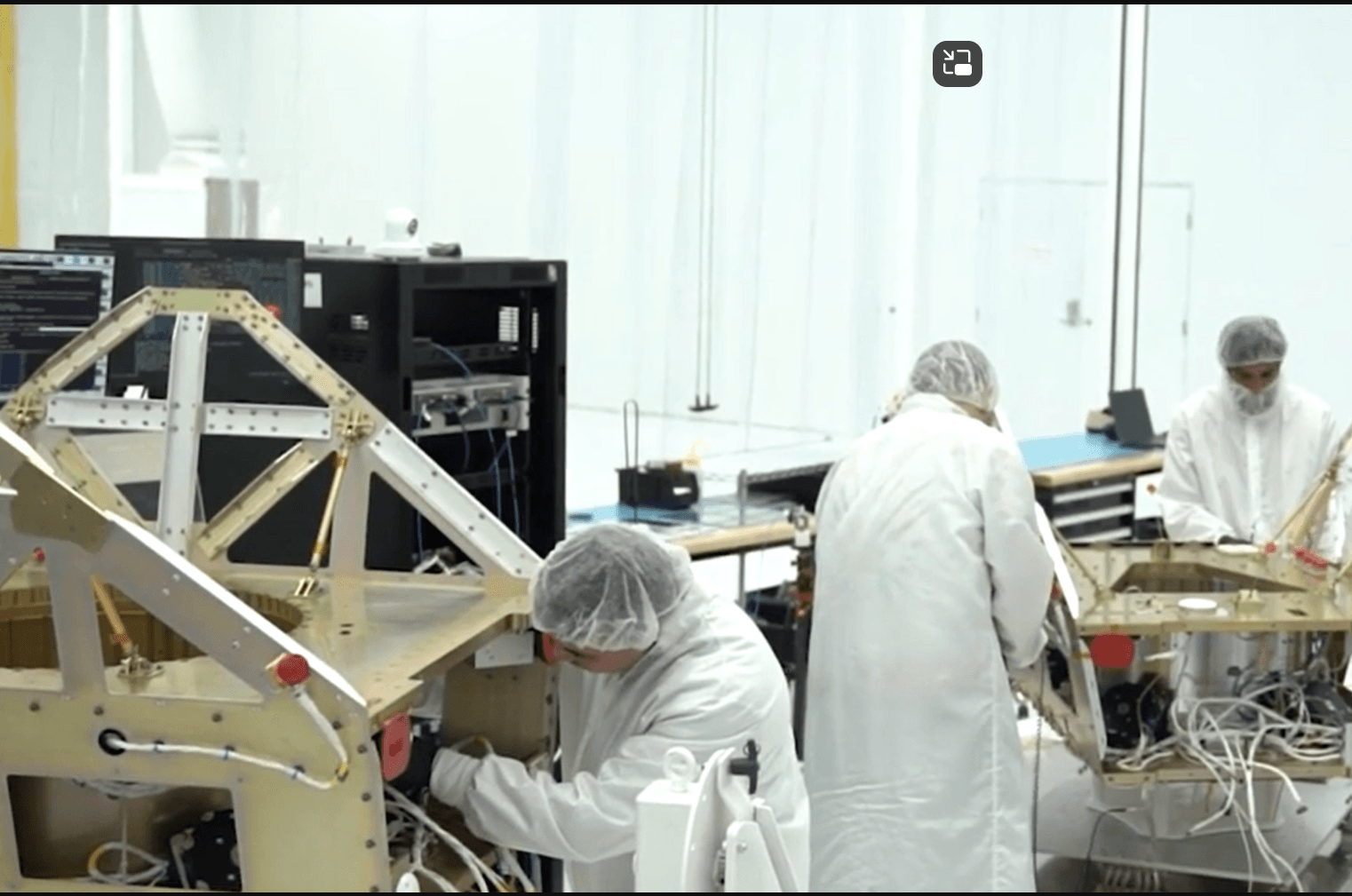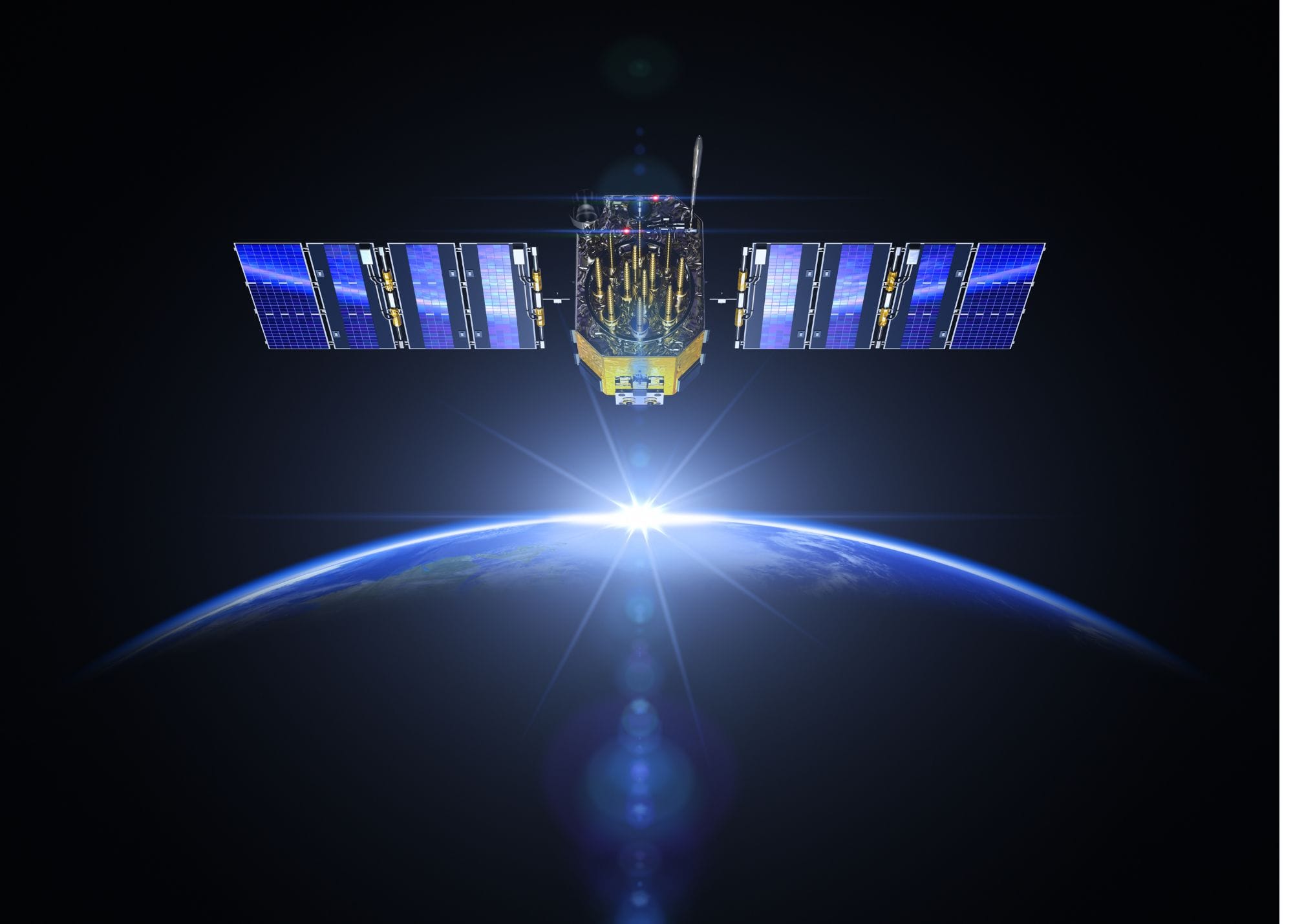Table of Contents
ToggleReaching New Heights – Over the Poles
In a bold first for human space exploration, SpaceX is set to launch Fram2, a privately funded mission that will carry four civilians into a polar orbit around Earth. If all goes to plan, the Crew Dragon capsule Resilience will lift off from Kennedy Space Center and sweep directly over the North and South Poles, a path “no human spaceflight mission has ever done” before. This ambitious four-day mission, led and financed by Maltese entrepreneur Chun Wang, is rewriting the spaceflight record books even before leaving the ground. Not only will the Fram2 crew become the first people to gaze down on Earth’s polar ice caps from low orbit, they will also conduct a suite of experiments aimed at future long-duration space travel – including growing oyster mushrooms in microgravity and taking the first X-ray of a human in space.

Slated to launch as early as March 31, 2025, Fram2 carries a cosmopolitan crew of first-time astronauts: Wang (originally from China, now Malta), Norwegian cinematographer Jannicke Mikkelsen, Australian adventurer Eric Philips, and German robotics researcher Rabea Rogge. Their backgrounds are as diverse as their nationalities – and notably, this mission will make Rogge the first German woman to reach space. Together, these four private explorers have trained extensively for months, from orbital mechanics classes to wilderness survival trips in Alaska, bonding as a team for what Wang calls “a chance to look down [on the poles] and take it all in live, then share what we’ve seen with the rest of the world”. With a nod to history, Wang named the mission after Fram, the famed 19th-century wooden ship that carried Norwegian explorers to uncharted Arctic and Antarctic regions. In the same spirit of exploration, Fram2 aims to push the boundaries of where humans can go and what we can learn, all on a privately bankrolled expedition.
Science on the Edge: Mushrooms, X-Rays, and More in Microgravity
Fram2 is far more than a sightseeing trip – it’s essentially a flying laboratory with an agenda worthy of a NASA mission, compressed into a few days. The crew will be busy conducting 22 different research investigations in orbit, each chosen to tackle challenges of long-term spaceflight. As mission commander Chun Wang put it, “with the same pioneering spirit as early polar explorers, we aim to bring back new data and knowledge to advance the long-term goals of space exploration”. From space nutrition to astronaut health, the scientific objectives of Fram2 could have far-reaching implications. Some of the most notable payloads and experiments include:
- “Mission MushVroom” – Space Mushrooms: In a world-first, the crew will attempt to grow oyster mushrooms in microgravity as a test of cultivating fresh food in space. The experiment, led by Australian startup FOODiQ Global, involves a small kit of fungal mycelium and substrate that astronaut Eric Philips will monitor daily. If the mycelia sprout their fleshy mushroom caps in orbit, it would mark the first crop of edible fungi grown in space. Why mushrooms? “Mushrooms are the perfect space crop,” explains Dr. Flávia Fayet-Moore, FOODiQ’s CEO and a space nutritionist. They grow rapidly (doubling in size every day), require minimal water and no soil, and naturally produce essential nutrients like vitamin D when exposed to UV light. In other words, future astronauts en route to Mars might harvest mushrooms to supplement their diets, rather than subsisting solely on pre-packaged meals. “Who can eat thermostabilized, dehydrated food for five years?” Fayet-Moore quipped, underscoring the need for fresh foods on long missions. If successful, the oyster mushrooms grown on Fram2 will be compared with control samples on Earth to see how microgravity affected their yield and nutrition. NASA has identified space-based food production as a top priority for coming Moon and Mars missions, so a bumper crop of “space shrooms” would indeed be, as one former NASA food scientist put it, “groundbreaking” for sustainable nutrition beyond Earth.
- “SpaceXray” – First X-Rays in Orbit: In another historic first, Fram2 is carrying a portable X-ray imaging device to perform the first-ever X-ray of a human body in space. Until now, if an astronaut broke a bone or suffered an injury, there was no capability to do an X-ray exam on orbit – a clear limitation for long voyages or lunar bases. The SpaceXray experiment will demonstrate taking an X-ray of a crew member in microgravity, likely imaging bone or chest anatomy. According to the mission team, this achievement “will open the door to a vast array of clinical, research and engineering applications” for future crews. Essentially, proving that medical diagnostic imaging can be done in space could pave the way for more advanced telemedicine on deep-space missions. For astronauts bound for Mars (with no quick return to Earth), having an on-board X-ray or even a mobile MRI scanner – which Fram2 is also testing on a small scale – might be lifesaving. (Yes, the crew will even experiment with a suitcase-sized MRI device to see how microgravity alters their brain structure over a short time.)
- Fitness and Physiology Experiments: Life in zero-G wreaks havoc on the human body – bones weaken, muscles atrophy, fluids shift – so Fram2 is carrying innovative research to counteract these effects. One study will test Blood Flow Restriction (BFR) training, a workout technique where astronauts wear specialized cuffs on their arms or legs to reduce blood flow while exercising. By partially constricting circulation, even light exercise can yield muscle-building benefits comparable to heavy weightlifting on Earth. This method was first tried in space on SpaceX’s Polaris Dawn mission in 2024, and now Fram2 will expand it by having crew members perform resistance exercises (like zero-G squats) with BFR gear to see if it effectively combats muscle and bone loss. Researchers from Northumbria University and others will analyze the results, which could inform astronaut fitness regimens on the International Space Station and future spacecraft. “By proving that BFR is safe to perform…in microgravity, this will unlock the next stage of space research,” says Dr. Joe Handsaker of Hytro, the company behind the BFR wearables. Other health experiments will examine how spaceflight affects blood glucose regulation, which is crucial if we ever send diabetic individuals to space, and how microgravity and radiation influence female reproductive hormones (an area not well studied in the male-dominated history of spaceflight).
- Sleep and Behavioral Studies: The Fram2 crew will also be test subjects for human factors research. Each astronaut is wearing devices (like Oura ring trackers) to monitor sleep patterns and circadian rhythms before, during, and after the mission. Quality sleep is often elusive in orbit – and understanding how civilians adapt on a short mission could yield insights for improving astronaut sleep schedules or lighting conditions in spacecraft. The crew’s cognitive performance and stress levels will be tracked as well, complementing the physical health data. Even the psychology of four strangers spending days confined in a small capsule can provide valuable lessons in team dynamics for future missions. (To prepare, the Fram2 crew undertook team-bonding expeditions, including camping together in the Alaskan wilderness – a cold, remote setting not unlike space in spirit.)

From “Mission MushVroom” to “SpaceXray,” each experiment on Fram2 is like a piece of the puzzle for living and working in space long-term. The mission’s scientific breadth is striking – in just 3–5 days, these private astronauts will dabble in botany, medicine, physiology, and even a bit of astronomy (they plan to photograph auroras and a mysterious atmospheric glow called STEVE). Success or failure, the data collected will flow back to researchers on Earth, adding to a growing body of knowledge. As Ralph Fritsche, a veteran NASA space crop researcher, noted about the mushroom trial, “Mission MushVroom plays a crucial role in advancing sustainable space food production for long-duration missions…and offers valuable insights that can enhance global food security here on Earth”. In other words, what happens in the Dragon capsule won’t stay in the Dragon capsule – it could influence how we farm in space and even how we eat on our home planet.
Polar Trajectory: Why Flying Over Earth’s Poles Matters
Perhaps the headline milestone of Fram2 is its unique orbital path. Unlike every crewed mission orbiting Earth before it, Fram2 is taking a true polar orbit, circling the globe north-south at a 90° inclination to the equator. This means the Dragon will pass over the Arctic and Antarctica on each lap, offering vantage points that even astronauts on the International Space Station (which loops around at 51.6° inclination) never get. “With the exception of the Apollo lunar missions, the North and South Poles have not been fully visible to other astronauts in orbit,” the Fram2 team noted. Indeed, Apollo crews glimpsed the whole Earth from afar, but no one has yet flown directly over Earth’s polar icecaps at low altitude. Fram2 will change that, effectively opening up the last untraversed orbital frontier around Earth.
From a scientific and observational standpoint, this polar trajectory is significant. The crew will have a continuous view of high-latitude regions that satellites regularly study but humans have only seen in snapshots. For instance, the mission plans to observe the auroras from directly above and investigate “STEVE”, an aurora-like atmospheric phenomenon of purplish light ribbons that occur closer to the poles. By being in a polar orbit, the astronauts can fly through auroral regions and possibly photograph these lights from inside the aurora oval – something orbital crews couldn’t experience on lower-inclination flights. Fram2 is even coordinating with a citizen science project (the SolarMaX project) to help take aurora photos from orbit for researchers. This could shed new light on how Earth’s magnetic fields and space weather interact, and it’s a reminder that astronauts can still contribute to Earth observation in ways automated spacecraft might miss.
Beyond the stunning views, flying over the poles is also a technical challenge and a risk. Historically, launching a crewed spacecraft into a polar orbit was avoided due to safety and energy concerns. To reach a 90° orbit from Florida, the Falcon 9 rocket must perform a “dog-leg” maneuver to avoid flying over populated areas, expending extra fuel. Even once in orbit, a polar mission faces harsher radiation environments. “Flying through the polar region is generally avoided in spaceflight due to the higher-than-usual radiation exposure, including risks associated with increased auroral activity,” notes NASA research on orbital trajectories. Essentially, Earth’s magnetic field funnels charged particles toward the poles, so a spaceship in polar orbit may encounter more intense radiation and geomagnetic disturbances than one circling around the equator. Fram2’s crew will likely see brilliant auroral displays up close, but those same solar particles create a radiation hazard. The mission is short (only a few days), which keeps exposure within acceptable limits – yet it underscores the “no guts, no glory” nature of this expedition. The four pioneers knowingly accepted a slightly higher risk in exchange for accomplishing something unprecedented in human spaceflight.
Then there’s the symbolic aspect. By naming the mission after Norway’s Fram polar ship, Chun Wang explicitly links it to the spirit of exploration – not of new continents, but new orbital terrain. “This new flight trajectory will unlock new possibilities for human spaceflight and provide a deeper understanding about our planet and its polar regions,” a Fram2 news release stated. There’s hope that proving the feasibility of polar orbits could enable future missions that, say, monitor climate change at the poles, or even service satellites in polar orbits. For Wang personally, having spent time in the Arctic archipelago of Svalbard, the polar route has personal meaning: “Since I spent a lot of time in Svalbard, I really wanted a chance to fly over this place,” he said. The ability to pick an orbital path for personal or scientific motive – rather than being limited by government mission profiles – is a testament to how far commercial spaceflight has come. Wang and his crewmates are essentially charting a new course above Earth. As he put it, “we’re going to have a chance to look down and take it all in live, then share what we’ve seen with the rest of the world… In addition to bringing the world a new view of the polar regions that are so important to us, we want to show that space is ultimately going to be for all people and nations.”
Fram2 in Context: The New Era of Private Space Missions
Fram2’s trailblazing journey is the latest leap forward in a rapidly evolving era of private spaceflight. Just a few years ago, the notion of an all-civilian crew orbiting Earth – without any professional astronauts on board – was the stuff of science fiction. Then came SpaceX’s Inspiration4 mission in 2021, which stunned the world by sending four private individuals (a tech billionaire and his crewmates) into orbit for three days. Inspiration4 was a proof of concept that orbital space was no longer exclusive to government astronauts. It was also a charitable endeavor, raising awareness and $200 million for a children’s hospital. That mission paved the way for a series of increasingly ambitious private flights. SpaceX followed up with the Axiom-1 mission to the ISS in 2022, the first privately organized trip to the International Space Station, carrying paying customers and a retired astronaut commander. Then in 2023, Axiom-2 flew more private explorers (including the first Saudis to visit the ISS) – signaling that even national astronauts can hitch rides via private companies now.
But SpaceX truly pushed the envelope with Polaris Dawn in 2024, another billionaire-funded mission that achieved the world’s first commercial spacewalk. On Polaris Dawn, two private astronauts donned SpaceX-designed suits and floated outside their Dragon capsule in orbit – a risky EVA that demonstrated SpaceX’s capabilities beyond just ferrying people. That mission, led by entrepreneur Jared Isaacman (who also funded Inspiration4), lasted five days and reached the highest Earth orbit since the Apollo era, all while conducting research similar in spirit to Fram2. Polaris Dawn proved that even complex activities like spacewalks and high-radiation orbits could be tackled by private missions. Now Fram2 picks up that baton: where Polaris Dawn went high, Fram2 goes south (and north) – each expanding the envelope in different ways. SpaceX’s Crew Dragon spacecraft, once built solely for NASA flights to the ISS, has now enabled free-flying expeditions that NASA itself never attempted. As one observer noted, SpaceX continues to push the limits of private spaceflight – from Inspiration4’s all-civilian crew, to Polaris Dawn’s EVA, and now Fram2’s polar orbit.
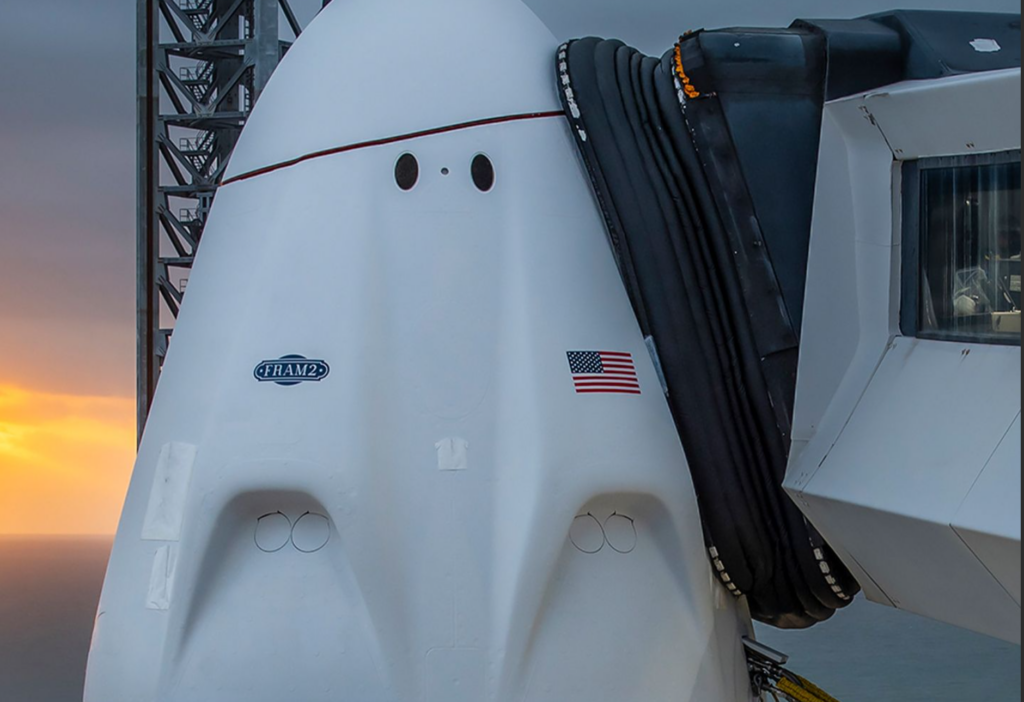
It’s also instructive to compare Fram2 with what other companies are doing. Blue Origin and Virgin Galactic, run by fellow billionaires Jeff Bezos and Richard Branson, have been flying private citizens too – but only on suborbital hops that last mere minutes. In 2021, 90-year-old actor William Shatner took a 10-minute leap to the edge of space on Blue Origin’s New Shepard rocket, experiencing a few moments of weightlessness before falling back to Earth. Such suborbital tourism flights are thrilling, to be sure – Shatner himself was moved to tears by seeing the curvature of Earth against the black of space – but they are fundamentally different from an orbital mission like Fram2. Orbital flight is far more demanding: the Dragon will be traveling at 28,000 km/h to circle Earth, requiring life support, toilets, and shielding to sustain the crew for days. In contrast, Blue Origin’s capsule and Virgin Galactic’s spaceplane are back on the ground in under 15 minutes, with no need for orbital navigation or prolonged life support. Fram2’s crew will orbit Earth roughly 60 times during their mission, truly living in space, whereas suborbital passengers get a brief taste of it.
Even among orbital ventures, Fram2 stands out for its focus on research. Some private flights have been dubbed “space tourism,” but Fram2 is more of a private science expedition. The crew isn’t composed of celebrities or tourists; they include a polar explorer, a scientist, and an engineer, all eager to perform experiments. In this sense, Fram2 harks back to the ethos of astronaut-scientists in the Shuttle era, except NASA isn’t footing the bill – a private individual is. We might call this model “citizen exploration”: privately funded missions with public-interest objectives. It’s a model we’ll likely see more of. On the horizon are even grander projects like dearMoon, a planned SpaceX Starship flight that will take artists and civilians on a loop around the Moon (financed by Japanese billionaire Yusaku Maezawa). There’s also the rest of the Polaris Program, which envisions a second Dragon flight and ultimately the first crewed Starship mission, all privately funded to advance technology. Meanwhile, companies like Axiom Space are developing commercial space stations and continue to send private crews to the ISS (Ax-3 and Ax-4 are already in the works for 2024–25).
Fram2’s achievement – being the first to reach a polar orbit – may also spur competitors to try new feats. We might soon see private missions launching from new locales (could a polar launch from Vandenberg with tourists be next?), or companies marketing specialty experiences like “orbit over your hometown at 500 km.” It’s not as far-fetched as it sounds; after all, Fram2’s polar trek was born from one person’s desire to fly over Svalbard. We’re entering an era where orbital itineraries can be customized to mission goals, something only robotic satellites did until now. For the space industry, that opens up niche markets – perhaps an Earth-observation tourism hybrid, where private crews conduct environmental monitoring from orbit, etc. SpaceX has shown with Dragon that if you have a willing crew and a big enough checkbook, the sky (or rather, space) is no longer the limit.
Implications for the U.S. Space Sector: Innovation, Policy, and Global Competition
The Fram2 mission is a landmark not just for SpaceX and the crew involved, but for the U.S. space sector at large. It highlights the growing synergy between commercial innovation and national interests in space. For NASA and the United States, having a private company enable such a mission confers both direct and soft power advantages. On one hand, Fram2’s experiments will yield data that could benefit NASA’s own planning for Moon and Mars journeys (e.g. knowing which crops grow well in microgravity or having proven medical tools for astronauts). On the other hand, the mission serves as a global advertisement for American space capabilities. SpaceX is demonstrating a level of agility and daring that traditional agencies can envy – doing things like polar orbits and on-orbit X-rays that even the Soviet and American space programs never did during the Cold War.
Such feats contribute to a perception of U.S. leadership in the new space race. While China and Russia have impressive government-led programs, the United States now has a vibrant commercial space ecosystem that is outpacing others in many respects. For example, China has no equivalent yet to SpaceX’s Dragon offering rides to private citizens – all Chinese taikonauts are military-trained and state-sponsored. If wealthy or adventurous individuals from around the world want to go to space, they are turning to American providers. (Notably, Fram2’s crew of four represents four different countries, none of which have their own human launch capability – a Maltese, a Norwegian, an Australian, a German, all flying from Florida. They had no choice but to partner with a U.S. company to fulfill their orbital ambitions.) This dynamic can bolster U.S. influence: much like American commercial airlines dominate air travel globally, American spacecraft might become the default ride to orbit for anyone in the world. Each international collaboration – such as training a Norwegian or launching an Australian experiment – builds goodwill and interdependence centered on U.S. space infrastructure.
There are also geopolitical signaling effects. Fram2’s commander, Chun Wang, is Chinese-born but chose to base his space venture out of the U.S. (becoming a Malta citizen in the process). It’s a subtle example of how an open, commercial approach in the U.S. can attract talent and capital that might otherwise flow to other countries. As NASA Administrator Bill Nelson has often warned, China’s space program is advancing quickly, but it remains state-controlled and closed to cooperation. In contrast, the U.S. encourages private-sector players, which creates a culture of rapid innovation. Fram2’s smorgasbord of experiments – involving universities, startups, even wearable tech companies – exemplifies this innovation ecosystem. A dozen organizations from multiple nations partnered to make Fram2’s science happen, under U.S. regulatory oversight. That collaborative, entrepreneurial spirit is a competitive asset for the U.S. It can accelerate technological progress (for instance, developing miniaturized MRI machines or advanced life-support farming techniques) faster than any centrally planned program.
Policy-wise, missions like Fram2 also challenge the government to keep up. Thus far, U.S. regulators have adopted a light touch toward commercial human spaceflight – essentially requiring informed consent from participants and ensuring safety for the uninvolved public, but not dictating every safety detail for the crew. This “learning period” in regulation, currently extended through at least 2027, was intended to let the nascent industry mature without heavy-handed rules. Fram2 is a product of that environment: a private venture could design a mission profile, assemble a crew, and launch with relatively little red tape beyond standard launch licensing. As these private missions achieve higher profiles and tackle riskier objectives, there will be growing scrutiny on whether more regulation is needed. Washington will be watching Fram2 closely. A success could reinforce the argument that industry can self-improve safety and best practices without immediate new laws. A mishap, however, might trigger calls for the FAA or Congress to impose stricter standards on commercial orbital flights. Policymakers are essentially balancing innovation against oversight. So far, they’ve bet on innovation – Congress even wrote into a 2024 bill that this hands-off period should continue precisely because companies like SpaceX are proving capable. Fram2’s outcome may influence that ongoing policy debate on how to regulate the final frontier.
From a commercial perspective, Fram2 could be a catalyst for new business. For SpaceX, it’s another paying mission that helps monetize Dragon beyond NASA contracts, potentially funding the development of Starship and other projects. If the experiments yield publishable results or patentable tech (say, a new compact X-ray device or high-yield space mushroom farm kit), we might see spinoff ventures. There’s also the less tangible but important factor of public interest and investor confidence. A daring mission like this captures imaginations – the image of citizen-astronauts orbiting over the Poles and growing food in space sounds like a sci-fi novel come to life. Success stories can attract more private investment into space startups (from biotech to spacecraft life support systems). It demonstrates a viable pathway for private-public collaboration: NASA and academia can offload some research to commercial flights, potentially saving taxpayer money. In fact, Fram2’s roster of research partners includes institutions and companies that saw an opportunity to get their studies done via a private mission. This could herald a new market for “orbital R&D services” – where instead of booking a satellite launch, scientists book a slot on a crewed free-flyer to do microgravity experiments cheaper or faster than waiting for an opening on the ISS.
Internationally, expect a bit of “space race” response too. Other nations won’t ignore a headline-grabbing American commercial mission. Europe, for instance, has been contemplating its approach to human spaceflight autonomy. With Fram2 and others showing what’s possible, European leaders might feel pressure to support their own commercial astronauts or vehicles. (Europe’s space agency ESA has no indigenous crew launch vehicle; its astronauts ride with NASA or Russia. Perhaps one day ESA will team with SpaceX or another U.S. firm for a polar Earth observation mission of its own.) Russia, which pioneered orbital tourism in the 2000s by flying millionaires to the ISS on Soyuz, has recently seen its private flight opportunities wane – especially as U.S. Dragons take over ISS taxi duties. Fram2 underlines how far SpaceX has leapfrogged Russia in the commercial arena; it’s hard to imagine Roscosmos organizing a mission like this anytime soon. That said, competition could come from new quarters: companies in other countries might attempt similar private missions using American hardware (for example, Houston-based Axiom Space plans to use SpaceX to launch a Hungarian astronaut on a national mission soon). In the longer run, if China ever opens up its space station to foreign or private visits, the U.S. commercial sector will have a rival destination to consider. For now, though, the United States – through companies like SpaceX – clearly dominates the private human spaceflight sector. Fram2 cements that status, showcasing capabilities that keep America in the spotlight as the vanguard of cutting-edge space exploration.
Conclusion: A Polar Expedition for the Space Age
As the Dragon spacecraft arcs over Earth’s poles with the Fram2 crew on board, it will carry with it more than the four people strapped into its seats. It carries the weight of many firsts – first polar orbit, first mushroom farming in space, first in vivo X-ray off Earth – and with those firsts, a promise of possibilities to come. There is a through-line from the wooden decks of the original Fram ship to the high-tech cabin of SpaceX’s Dragon: the urge to explore new frontiers, be they icy seas or cosmic orbits, and to bring back knowledge for all humanity. In a conversational reflection on his mission, Chun Wang shared that he hopes Fram2 will show “space is ultimately going to be for all people and nations”. It’s a lofty ideal, yet one that feels a bit closer now. Just as importantly, Fram2 exemplifies how private initiative can complement and amplify the grand ambitions we usually leave to agencies and governments. The mission’s thought-provoking blend of adventure and research – gazing at auroras while tending a microgravity mushroom garden – could inspire a new generation of scientists, entrepreneurs, and dreamers.
In editorial offices, commentators are already drawing comparisons to the great exploratory expeditions of yore. But Fram2 is also very much a product of today: a 21st-century fusion of tech start-up culture, crowdfunding spirit (albeit by one wealthy individual), and global collaboration. It raises questions we’ll be pondering for years: How do we ensure these private odysseys serve the public good? What balance of freedom and regulation will best foster innovation while keeping astronauts safe? And how can the breakthroughs from a mission like this – whether a method to grow fresh food on Mars or a new medical diagnostic tool – be leveraged to benefit life back on Earth? None of those answers will come overnight. Yet, as Fram2 sails onward over Earth’s most remote regions, one cannot help but marvel at the historic moment it represents. For the first time, humanity is exploring Earth’s polar skies in person, extending our reach in a way even the Apollo astronauts didn’t. It’s at once a daring private enterprise and a collective step forward for our species.
In the end, the success of SpaceX’s Fram2 mission won’t just be measured by how many orbits it completes or how well the mushrooms grew. Its real legacy may lie in the doors it opens – to new trajectories, new science, and new forms of cooperation between the private sector and the public sphere. Fram2 invites us to imagine a future where missions like this are no longer one-offs but a regular cadence: where commercial “astropreneurs” venture to orbit to advance science and exploration, working alongside agencies rather than in their shadow. As we watch the Fram2 crew circle over the top and bottom of the world, conducting experiments with an aurora glowing beneath them, it’s clear we are witnessing something remarkable. This is human spaceflight evolving before our eyes – becoming more inclusive, more experimental, and increasingly driven by the bold vision of private citizens. And if Fram2 is any indication, that evolution is taking us forward, onward – true to the mission’s name – into a future where space is indeed for everyone, and where even the most distant horizons are within reach.

